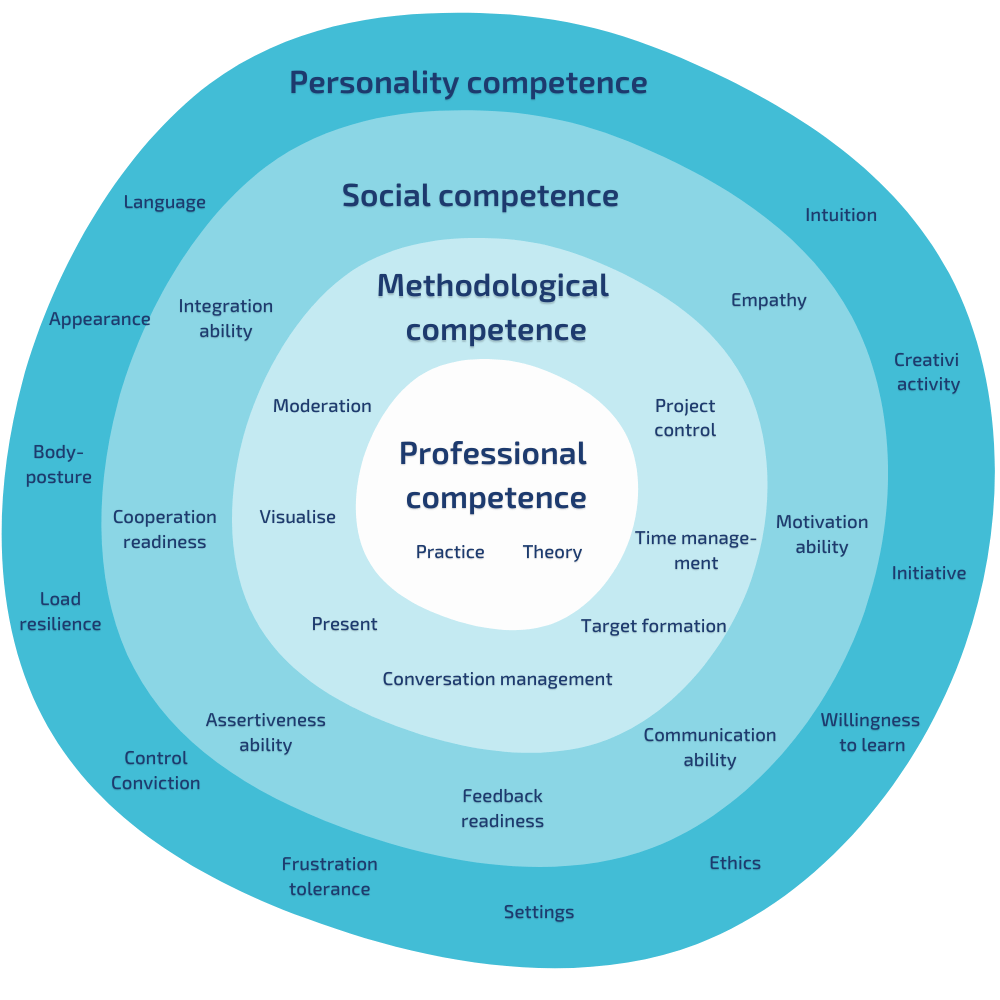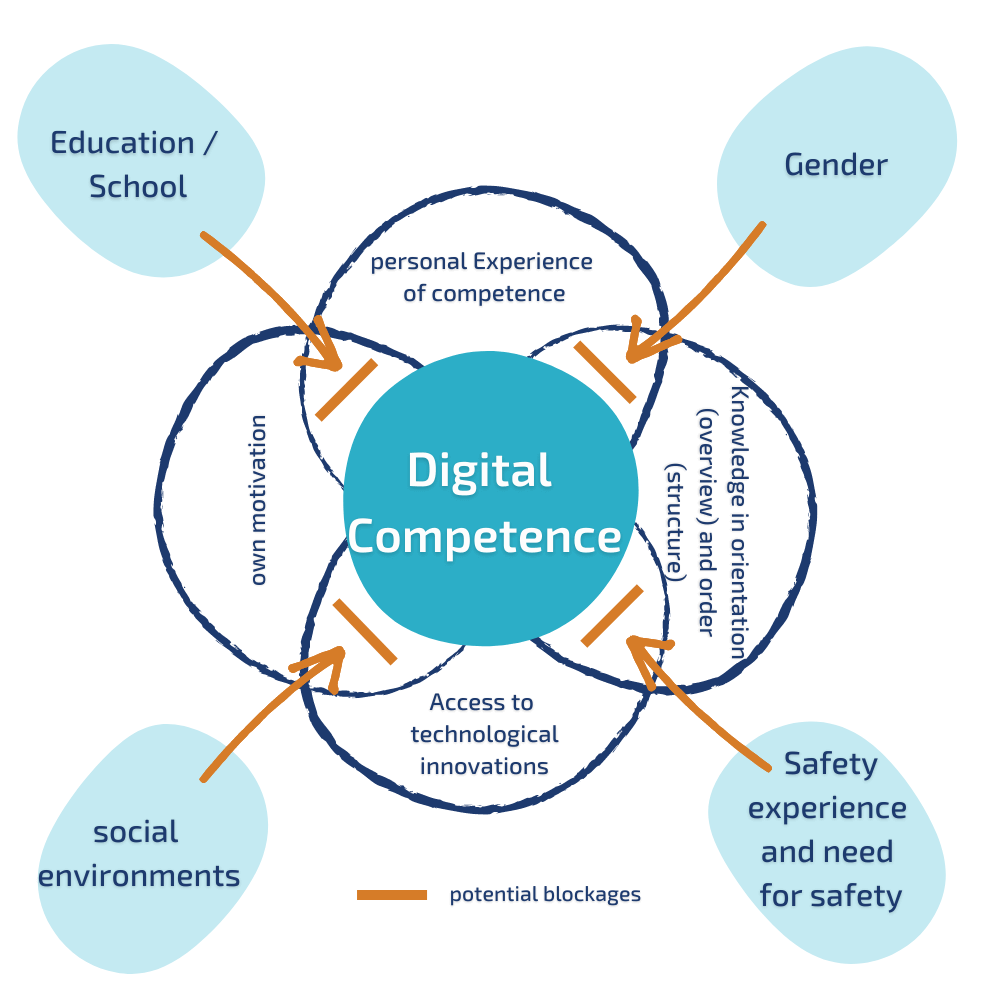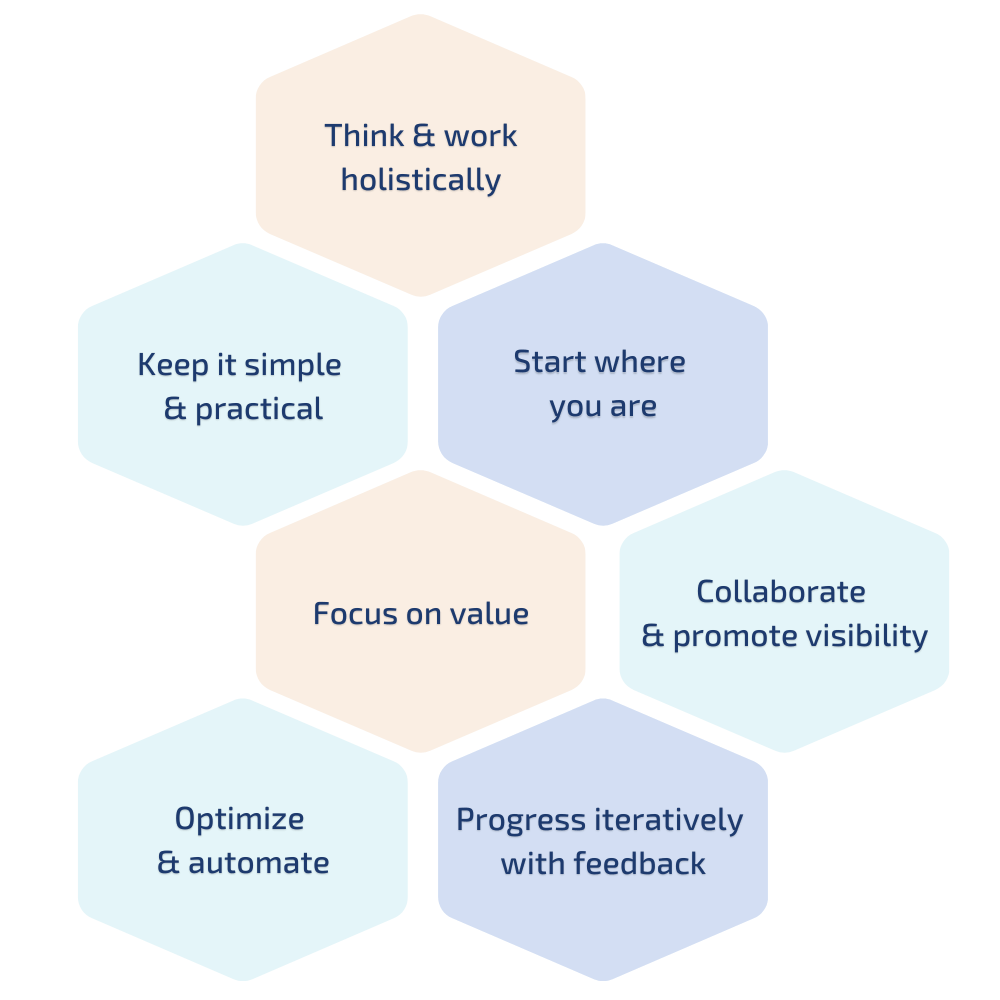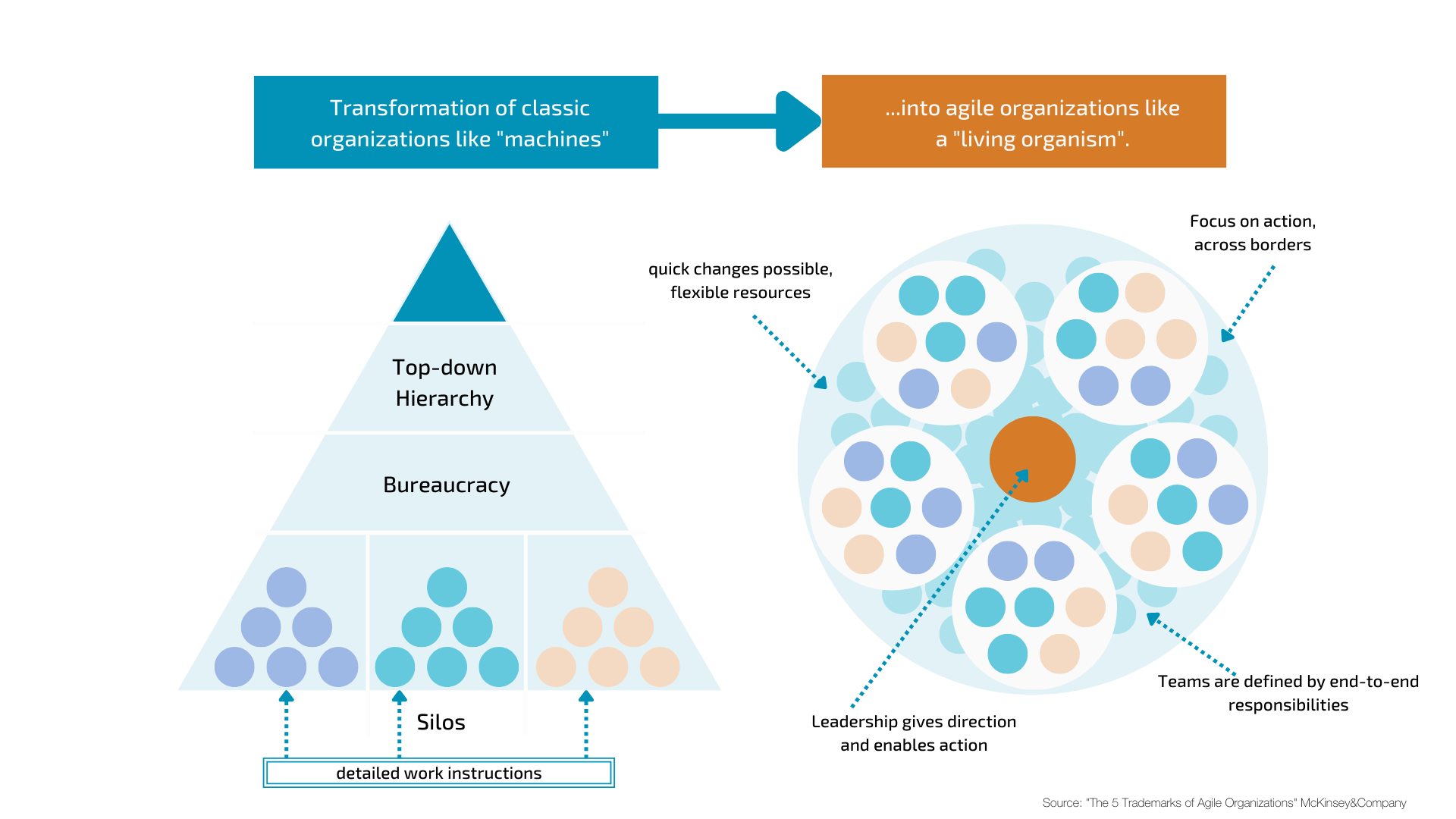Sluggish digitalisation transformation?
ITIL4 as a transformation booster?
Digitalization and its impact on corporate culture
I can still remember when I was introduced to the shell model of human competences according to J. Fuchs in a seminar and even then the statement was made that technical and methodological competences are easier to qualify than social and personal competences (the further "inside" a competence is positioned, the later it was learned and the easier it is to change). Of course, this is immediately obvious to everyone, and yet, today, too much emphasis is placed on the former when hiring, and too much training is offered within organisations for technical and methodological competences, but little to none is offered for personal development and social competence (further training for social competence is usually offered only to managers).

Figure 1 Shell model according to J. Fuchs
Companies today are under great pressure to transform, digitalisation is entering every area of the company, a change that affects all people in the organisation and who should also support it in terms of corporate development. Not everyone is aware of the advantages and necessity of digitalisation or restructuring in their area, not everyone is open to this change. Also with hightened transparency, which is created by digitalisation, one or the other has reservations and reacts reluctantly, whatever personal reasons may be, this should be considered sensitively and attentively. The development of digital competence is also dependent on various personal and systematic factors (see Fig. 2 - Digital competence), which need to be explored and promoted.
Change often is accompanied by fears and the above-mentioned concerns stem from the personality and character of the individual and lead to corresponding fears. In this case, it is important to live communication openly and inclusively when realigning and adapting processes and structures that have been in place for many years. In order to give employees security and competence for upcoming changes, further education and training offers are an important building block. Here, in particular, it is important not only to strengthen professional competencies, but also to offer coaching or seminars for personal development and social competence. Above all, leaders and management must be able to empathically "pick up" employees at their respective and individual place and take them along. The management should also reflect on whether the current corporate culture can meet the challenges in this way. This can also lead to changes within the corporate culture at all levels through honest and critical reflection. And things take time, so a great dynamic and speed can build up a lot of unwanted pressure that overwhelmes the organisation as well as the employee as an individual. Agility, empathy and humanity are therefore more in demand than ever in the company.

Figure 2 Blockages to the development of digital competence (Source: 'Digital natives: myth busted Digitale Kompetenzen und habituelle Verstrickungen' by Andrea Schaffar and Claudia Friesinger)
ITIL4 is a good methodical and holistic tool that helps organisations to create a leitmotif in order to overcome challenges in a holistic, structured way and with best practices. With this framework, there are no specifications on how something has to be done, but rather best practices and generally accepted rules are provided, which offer good and holistic support in process revision or definition. If you have already internalised the seven guiding principles of ITIL4, you are already on the right track! But this is exactly where there is still some potential for optimisation in many companies.

Figure 3 The 7 guiding principles according to ITIL4
These seven guiding principles should not only be communicated in a company, but should also be lived by consciously. A uniform understanding of these principles should also be created, which in turn requires communication, feedback and, above all, living by example. ITIL4 also deals more intensively with the topics of communication and culture, as these can essentially drive or block a change. For example, ITIL4 describes the basic principles of all communication, including the fact that we communicate anywhere, everywhere and at all times and that no single communication method works for every individual. Also, a very important principle that should be considered sensitively: "The medium is the message" (Marshall McLuhan). It matters a lot which message is spread through which medium, it does matter whether you are informed personally by a superior about changes in the company structure or only via an impersonal email or newsletter. Or whether the vision of a company is reflected in the corporate media or only mentioned verballyin a meeting.
Depending on what you want to convey as a message and what expectation(s) you associate with it, the medium should be chosen consciously. Of course, this applies not only to internal communication processes but also to the services that a company offers on the market. Here, too, service mindset and service empathy must be subjected to regular internal improvement processes. As long as an employee does not fully understand the added value of his or her contribution to the provision of a service, a gap will arise, which can have negative effects on the service.
The guiding principle "Think & Work Holistically" is the most challenging of the seven guiding principles according to ITIL4, because it requires skills from all fields of competence, but especially from social and personal competence. And here, too little has been promoted in the last decades, so that the greatest weaknesses are also revealed here. This is where companies have the greatest learning curve to tackle and, above all, opportunities. If the holistic approach is fully implemented, this will not only be a benefit for the company itself, but even for society and the direct environment, as really all aspects of corporate action and its effects are considered and subjected to a continuous improvement process.
Technically, the seven guiding principles can be promoted through various digital applications, such as collaboration-, ITSM-, monitoring-, automation-, process management-, idea management- and other tools. Here, too, each tool should be reviewed with the guiding principles in mind, and in the case of a new introduction, attention should be paid to integration into the existing IT landscape and, above all, to the impact on employees concerned right from the start. In order to remain flexible in this process, the principle of small steps should be followed and each milestone should be consciously noticed, celebrated and the result subjected to feedback loops in order to be able to quickly adapt the development to changing requirements. Employees drive projects/topics forward with joy and motivation when a sense of purpose is revealed to them. Meaningfulness is based on understanding. Understanding in turn requires transparency and open communication. If an application is not accepted by employees and users (e.g. due to lack of communication, lack of further training, wrong understanding of the value creation process), the transformation gets stuck at this point and a great deal of effort is needed to pick up speed again (group dynamics also should not be neglected here). With the introduction of agile methods, which are also taken into account in ITIL4, one has very good tools at hand to be able to react quickly to changes and to shorten time to market. However, this can only be achieved if all employees are trained in these methods and, above all, a culture is created that promotes agility, cooperation and transparency and thus breaks down silos.

Figure 4 Development towards an agile organisation as a new organisational paradigm (Source: 'The 5 Trademarks of Agile Organizations' McKinsey&Company)
Furthermore, with its practices, ITIL4 provides proven know-how for the introduction or realignment of digital processes, which offer a very good orientation and structure. Known as processes from ITIL v3, the practices in ITIL4 take a more holistic view than just the process itself. I.e. the focus is more on the organisational capabilities or skills of an organisation. The balance of the four dimensions of service management plays a major role and these are not limited to just one section of a service, but to the entire service value system. What was not clearly expressed with ITIL v3, leading to rigid definitions of processes without appropriate consideration of people and tools, resulting in the failure of ITSM strategies in many organisations, has been significantly expanded and holistically implemented with the concept of ITIL4. It is about a proper consideration of the 4 dimensions - organisations and people, information and technologies, partners and suppliers, value streams and processes - and these are basically to be considered for each individual service and adjusted if necessary. However, in order to be in exactly this position, to be able to look at and question one's existing culture, structures and processes holistically, some skills from the personality and social competences are necessary.
This brings me to the conclusion that the culture and values of an organisation are increasingly coming to the fore and that organisations should be allowed to open up even more to new working models. However, this should not only happen on a functional/methodological level, but above all on a mental/cultural level. The necessary adaptations of the working models from the Corona era, in which many companies were forced to go new ways and were allowed to realise that added value resulted, should be viewed positively here. However, it is not necessary to push for such changes through external pressure; with a regular review and reality check of one's corporate values and culture, one can also open up to more and more new models in small steps. The sledgehammer method is very effective, but unfortunately efficiency only comes after a period of suffering and the risk of collateral damage is very high. This in turn can lead to high frustration, resignation and increased turnover. It doesn't have to come to that, through forward-looking strategies these scenarios can be avoided as much as possible. Continuous improvement should always be in focus and consciously promoted. ITIL4 offers very good approaches that are worth taking a closer look at.
Get in touch with us!
We look forward to your IT
We would also be happy to take on your IT together and develop strategic principles, design reliable system architectures, implement a sound basis and ensure modular, scalable, and highly available IT in your company - concerning SAP and beyond. Give us a call or send us an e-mail: We are excited to see what we can achieve together!
